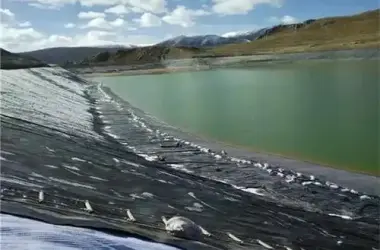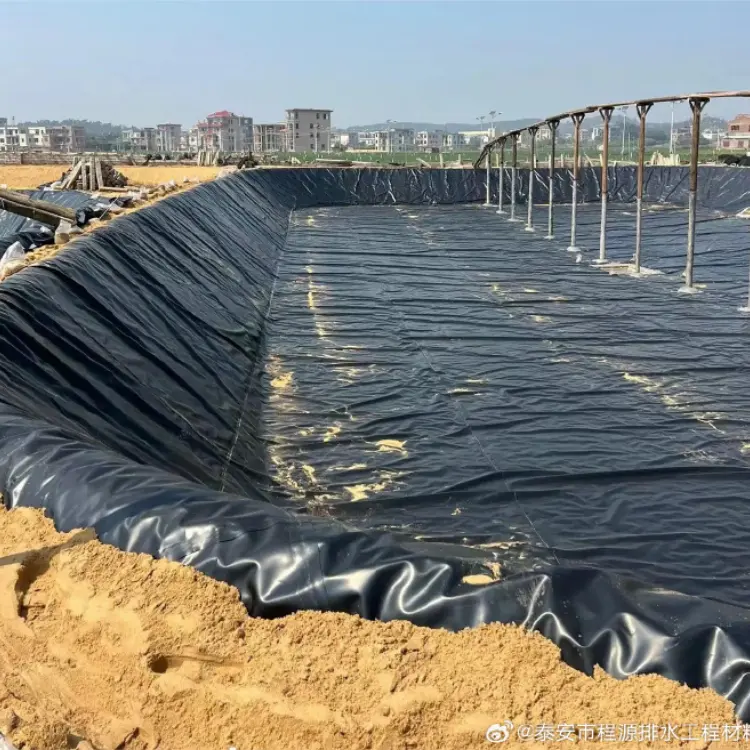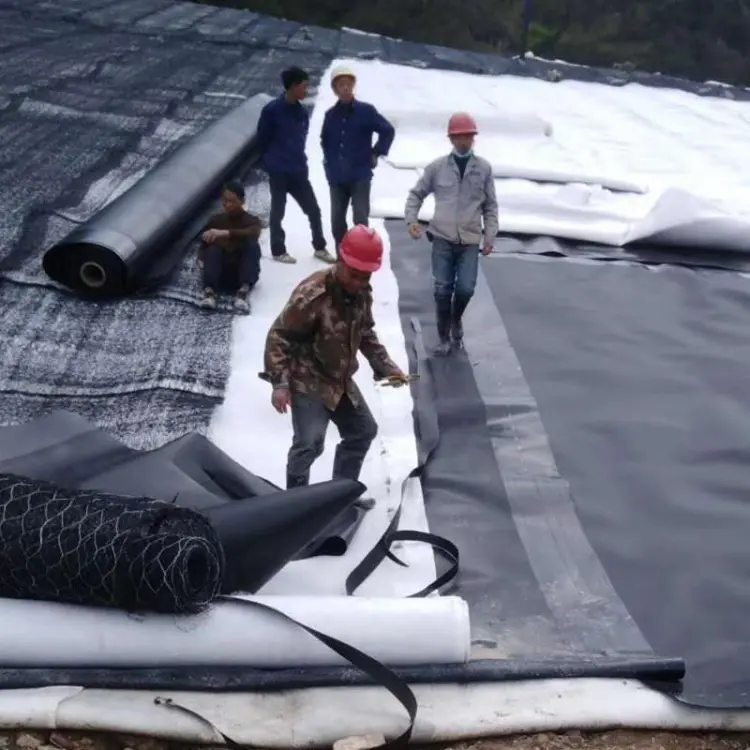
1. Importance of Reservoir Seepage Control
With China’s growing water scarcity crisis, the scientific utilization of water resources has become a global priority, necessitating intensified focus on anti-seepage measures in hydraulic engineering projects nationwide. Traditional seepage control methods are inadequate for modern reservoir demands, requiring innovative techniques to ensure sustainable water resource management. Reservoir leakage not only compromises operational functionality but critically endangers earthen dam structural integrity—particularly in alluvial plain reservoirs where thin clay/silt clay surface layers overlay highly permeable fine sand strata, mandating engineered interventions.
 2. Geomembrane Applications in Reservoir Seepage Control
2. Geomembrane Applications in Reservoir Seepage Control
Geomembranes—flexible impermeable materials with proven sealing capabilities—trace their origins to the 1920s-1930s when PVC variants lined swimming pools. By the early 1950s, the U.S. Bureau of Reclamation adopted PVC geomembranes for lining applications, while the Soviet Union pioneered polyethylene films for channel seepage control.
China’s geomembrane development accelerated rapidly from the mid-1960s, initially applied in channel projects like Henan’s People’s Victory Canal and Shaanxi’s People’s Wei River Diversion, later expanding to reservoirs, sluices, and storage ponds. Key advantages include:
- Superior strength, elasticity, abrasion/chemical corrosion resistance
- Fungal/insect immunity and simplified installation procedures
- Cost-effectiveness and accelerated construction timelines
Applications span reservoir basin sealing, vertical/horizontal anti-seepage walls for earth-rock dams, upstream blankets for gate dams, and impermeable layers in concrete/bituminous face rockfill dams.
 3. Selection Criteria for Anti-seepage Materials
3. Selection Criteria for Anti-seepage Materials
Geomembranes are selected based on project-specific functional requirements, prioritizing physical, mechanical, chemical, thermal, and durability properties. Critical performance metrics include:
- Water impermeability (hydraulic conductivity <10⁻¹² m/s)
- Deformation adaptability (≥100% elongation at break)
- Long-term durability, especially for submerged/buried conditions
Practical engineering applications confirm their exceptional imperviousness and waterproofing reliability. Key selection considerations involve: - Material chemistry (HDPE, PVC, or LLDPE formulations)
- Configuration type (single-layer geomembranes vs. composite geosynthetic clay liners)
- Site-specific stress-strain compatibility and environmental exposure factors.
 2. Geomembrane Applications in Reservoir Seepage Control
2. Geomembrane Applications in Reservoir Seepage Control 3. Selection Criteria for Anti-seepage Materials
3. Selection Criteria for Anti-seepage Materials